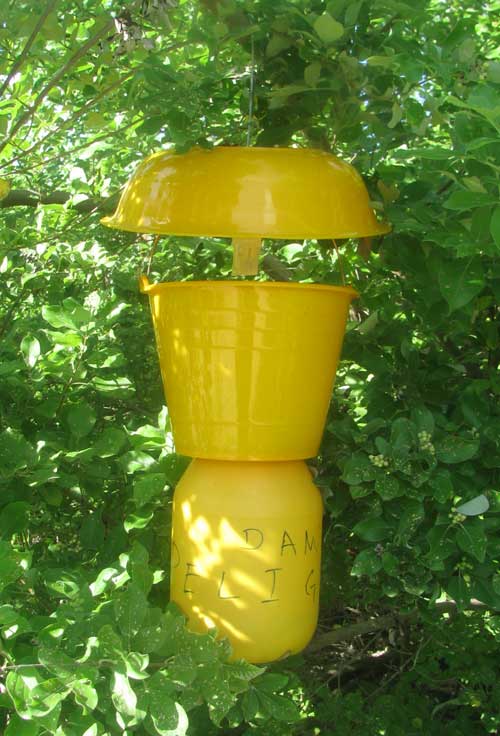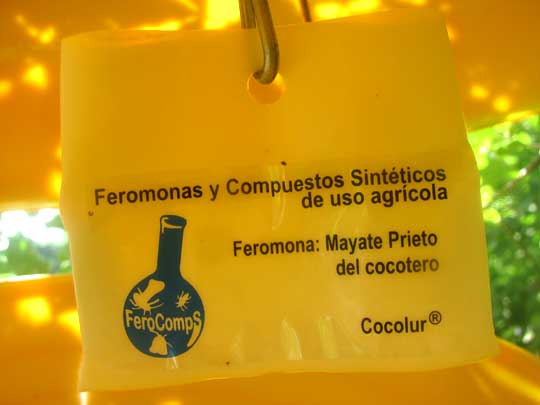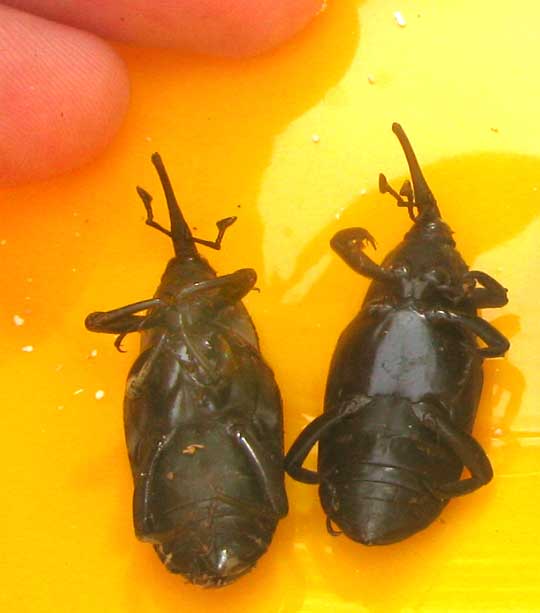Excerpts from Jim Conrad's
Naturalist Newsletter
from the September 4, 2011 Newsletter issued from Mayan Beach Garden Inn 20 kms north of Mahahual; Caribbean coastal beach and mangroves, ~N18.89°, ~W87.64°, Quintana Roo state, MÉXICO
PHEROMONE TRAPS ALONG THE ROAD
The other day four men passed through the area hanging onto roadside trees the yellow objects seen below:

In that picture the words on the bottom are "DANGER" and "PELIGRO," peligro meaning danger. Without touching anything I snapped a picture of the yellow card suspended from the center of the hood, shown below:

The top two lines translate to, "Synthetic pheromones and compounds of agricultural use."
The middle two lines read, "Pheromone: Palm Weevil." The words "Mayate Prieto del Cocotero" are the Spanish name for the insect known in English as the Palm Weevil, Rhynchophorus palmarum.
Pheromones are secreted or excreted chemicals, sometimes transmitted through the air, that trigger social responses in members of the same species. There are alarm pheromones, food trail pheromones, sex pheromones, and many other kinds. In this case, pheromones attract adult insects causing a disease, then in the bottom of the trap the insects eat poisoned bananas, and die.
You might remember our earlier piece on Lethal Yellowing Disease, or LYD, which has killed about 95% of this area's Coconut trees. That story is online at www.backyardnature.net/yucatan/lethal.htm.
Papers on the Internet peg the weevil larvae killing palms weakened by Lethal Yellow Disease as those of the Palmetto Weevil, Rhynchophorus cruentatus. That's different from the Palm Weevil, Rhynchophorus palmarum, which our pheromone traps are for. The Palm Weevil of our traps is known mostly for spreading a nematode disease called Anillo Rojo in Spanish, or Red Ring Disease, which kills Coconuts, Oil Palms, Date Palms, Papayas and Banana trees. Maybe the Palm Weevil is yet another newly invading threat to our Coconut Palms.
I chanced to meet a technician maintaining the traps, which must be done every two weeks. He had some dead weevils he identified as Palm Weevils. Two weevils beside one of my pinkie fingers for scale are shown below:
